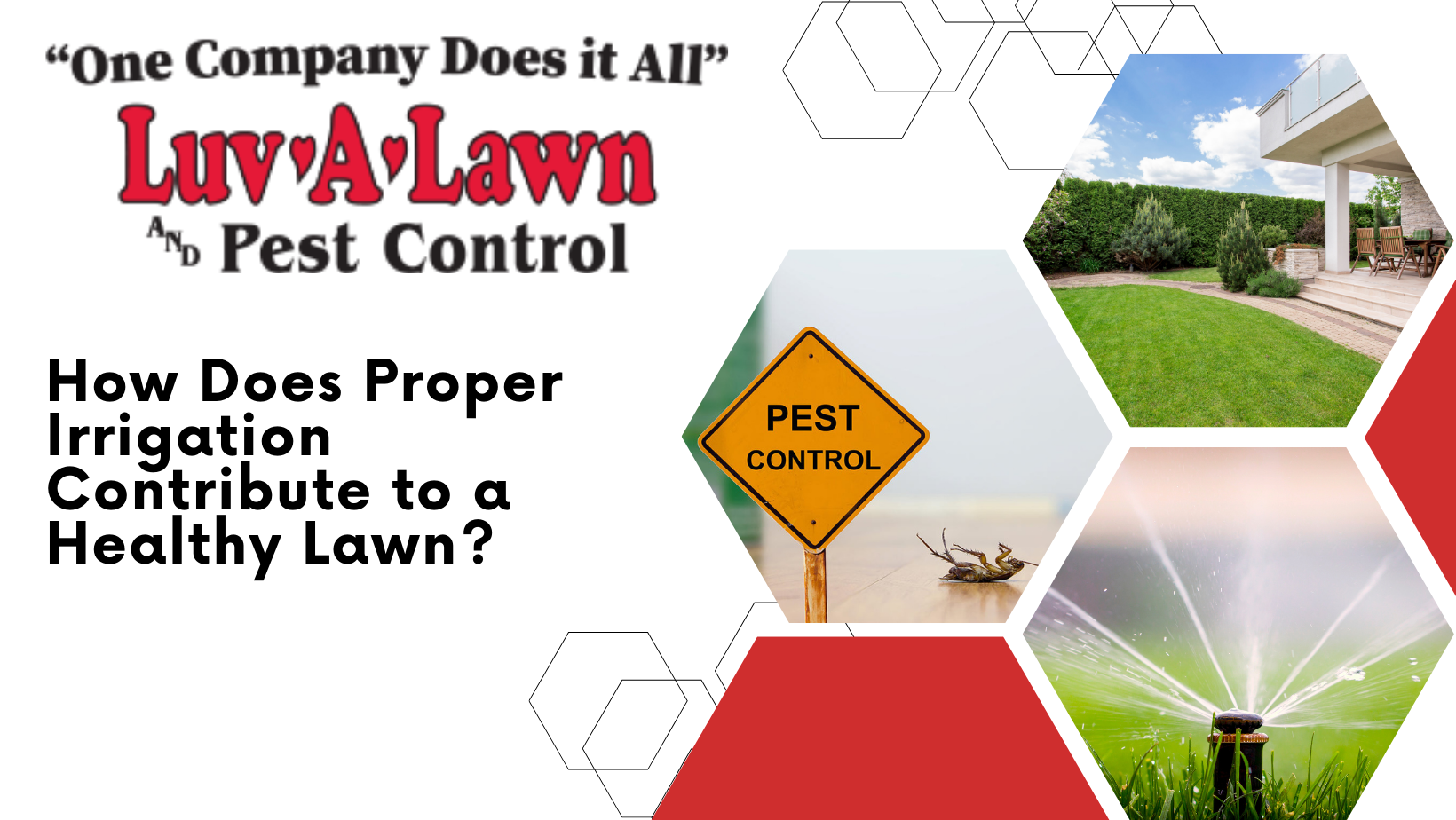Proper Irrigation – The Importance of it for a Healthy Lawn
Proper Irrigation – A lush, green lawn not only increases your home’s curb appeal but also provides a welcoming space for outdoor activities and relaxation. One of the critical factors that contribute to the overall health and beauty of your lawn is proper irrigation.
Consistent and adequate watering promotes strong, deep roots and enables grass to withstand stress, resist pests, and replenish nutrients throughout the growing season. However, maintaining optimal irrigation can be a delicate balancing act, requiring an understanding of your lawn’s specific needs and environmental factors.
Overwatering and underwatering can both lead to various problems, such as weak turf, shallow roots, and an increased vulnerability to pests, diseases, and invasive weeds. Failing to provide the necessary water can result in an unhealthy lawn that is more susceptible to the myriad of challenges that homeowners face, including heat stress, pests, and soil compaction.Proper Irrigation
On the other hand, excess water can create an environment conducive to various lawn diseases, pests, and shallow root systems, ultimately weakening your turf and making it less able to withstand stress.
Understanding how irrigation plays a crucial role in lawn health is essential for homeowners aiming to maintain a vibrant and thriving outdoor space. Whether you’re a seasoned lawn care expert or a beginner learning about proper lawn maintenance, it’s essential to recognize the importance of optimizing your watering routine to promote a lush, healthy lawn.
Understanding Your Lawn’s Water Requirements
Before diving into irrigation methods, it’s crucial to first determine your lawn’s specific water requirements. Several factors influence how much water your lawn needs, such as grass species, soil type, and climate.
Generally, turfgrass needs an average of 1 to 1.5 inches of water per week, either from rain or irrigation. However, this amount may vary depending on localized conditions. Here are some considerations to help you estimate your lawn’s water demands:
2. Soil Type: The type of soil that your lawn grows in can significantly impact its ability to retain and absorb water. Sandy soil tends to drain water quickly, requiring more frequent watering.Proper Irrigation
3. Climate and Weather Conditions: Local climate and seasonal changes play a vital role in determining your lawn’s water needs. Hot, dry, or windy weather can lead to increased evaporation and soil moisture loss, while cooler temperatures and higher humidity may reduce water requirements.
Best Practices for Efficient Lawn Watering
Armed with the knowledge of your lawn’s water needs, it’s time to learn efficient water management practices that will promote the growth of a healthy lawn:
1. Water Deeply and Infrequently: Deep watering encourages the growth of a more robust and deeper root system. Aim to water your lawn thoroughly so that moisture reaches a depth of six to eight inches. This may require around 1 inch of water for clay soil and slightly less for sandy soil. Watering once or twice a week is generally sufficient for most lawns.
2. Time Your Irrigation Correctly: The best time to water your lawn is in the early morning, between 4 a.m. and 10 a.m., when temperatures are cooler, and evaporation rates are lower. Watering during the heat of the day can lead to significant water loss while watering in the evenings can promote the growth of mold and other lawn diseases.
3. Calibrate Your Sprinkler System: Ensuring that your sprinkler system is properly calibrated can help you avoid over- or underwatering and uneven coverage. Periodically check your system for leaks, misaligned sprinklers, and other issues that may affect the efficiency of your irrigation system.Proper Irrigation
4. Utilize Rain Sensors: Installing rain sensors in your irrigation system can help conserve water and prevent overwatering by detecting precipitation levels and adjusting irrigation accordingly.
Recognizing the Signs of Improper Irrigation
Keeping an eye out for warning signs of over- or underwatering can help you maintain optimal irrigation for your lawn. Here are some common indicators that your lawn’s water management needs attention:
1. Overwatering: Signs of overwatering include shallow root systems, yellowing grass, fungus or mold growth, and an increased presence of pests.
2. Underwatering: Symptoms of underwatering consist of dry, brown patches, grass that fails to “bounce back” when stepped on, and curling grass blades. Proper Irrigation
3. Uneven Watering: If you notice uneven growth, patchiness, or inconsistent color on your lawn, it could signal an issue with your sprinkler system that is leading to uneven water distribution.
The Role of Professional Irrigation Assistance
A well-designed and properly maintained irrigation system can help you achieve a healthy, vibrant lawn with minimal effort. This is where professional assistance from a company like LuvALawn comes into play.
Experienced pros can evaluate your lawn and recommend a tailored irrigation plan, as well as provide expert advice on the necessary equipment and best practices to maximize efficiency and conserve water. Plus, they can assist in regular maintenance to prevent potential issues with sprinkler heads, leaks, and system calibration, ensuring a consistent and adequate water supply for your lawn. Proper Irrigation
The Connection Between Proper Irrigation and Lawn Quality
Proper irrigation is a fundamental component of maintaining a healthy and thriving lawn. By understanding your lawn’s water requirements, employing best practices for watering, and enlisting professional help when needed, you can ensure that your lawn remains lush and beautiful, providing a welcoming space for you and your family to enjoy.
Partner with experienced lawn care specialists, like LuvALawn, for personalized irrigation solutions, and watch your outdoor oasis flourish. Don’t let improper watering hold your lawn back—create the vibrant, healthy landscape you’ve always desired by perfecting your irrigation techniques today.






